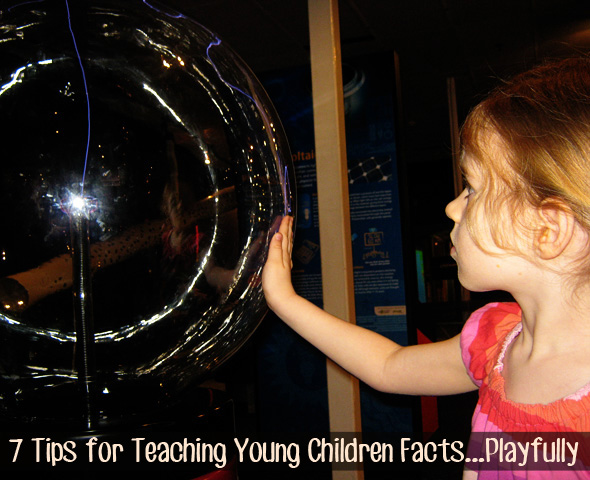Tips for Teaching Young Children Facts…Playfully!
“But what happened to the dinosaurs?”
“Why do I have blood?”
“How does a bee carry pollen?”
Children are naturally curious. Many children ask lots of questions, especially when it comes to a topic or theme that they are particularly interested in.
By engaging with your child’s interests you show them that knowledge is important, that asking questions and looking for answers is valuable. But it is important to keep in mind that young children learn best when information is presented in a playful, engaging manner. Here are seven tips for helping you to do just that:
- Follow their lead, observing how engaged they are with the information and responding appropriately (for example, if the child’s eyes start to glaze over or they are looking overly confused, it may be time to move on to something else). Small snippets of information are generally better.
- Babies and toddlers learn mostly by imitation and association. Think about the way in which your child learnt that a ball is a ball – it most probably involved seeing it roll across the floor or bounce in response to your (and later their) touch), by feeling the sensation of a ball in their hands, hearing your call the object a ball, maybe even licking or sucking on it! These real life, sensory observations are important to preschoolers and kindergartners (and arguably bigger kids as well) too.
- Look for opportunities to make the learning hands on and visual. Fun science activities, creative expression experiences (that allow for the expression of thinking, understanding and ideas), activities that engage the whole body, and age appropriate field trips are four ways to achieve this.
- Use oral stories, picture books and children’s non fiction books to present information on topics of interest.
- Observe how well your child has understood the information by making up a game. For example, Immy has recently learnt the meaning of the words true and false so we will often make up a game where I ask her a series of questions about a picture, object or subject and she will answer true or false.
- Use age appropriate videos, televisions or movies and internet searches as one tool for accessing information but keep in mind that the more active the learning the better, and that children learn best through media when you watch alongside them and talk with them about what they have seen.
- Be interested in what your child thinks, what they have to say about the topic and talk together regularly. Children’s learning is reinforced when it is shared socially.
What is your child’s current obsession, fascination or interest?
Related Posts
- Asking Questions That Encourage Creative Thinking
- Baby Steps Online
- Revisiting the Hundred Languages of Children
- Responding to Children’s Spontaneous Experimentation
- Everyday Learning at Home


Great post on following the lead of the child when responding to teaching facts! I would add that sometimes, when children ask questions about specific “facts”, they’re really looking for an audience to express their own ideas. For example, when a child asks “What happened to the dinosaurs?” she may not really be looking for “Here are some possible theories…” She may be looking for an invitation to share her own ideas. A response, such as “What do you think?” could open the conversation, so she can share “I think all the ice melted and there was a flood and they couldn’t fit all the dinosaurs on the boat.” (Someone’s been watching Ice Age.) Sometimes we get caught up in finding the right answer, when children really are looking for is an attentive adult who is willing to listen to their ideas.